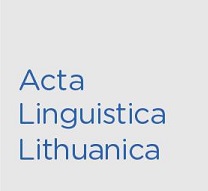Lietuvių ir latvių kalbų virpamųjų sonantų fo rm antės skirtingose pozicijose: akustinis ir statistinis tyrimas
Lithuanian and Latvian Trills: An Acoustic and Statistical Study of Formant Structure
Author(s): Jolita Urbanavičienė, Jana TaperteSubject(s): Phonetics / Phonology, Morphology, Lexis, Baltic Languages
Published by: Lietuvių Kalbos Institutas
Keywords: Baltic languages; trills; formants; statistical significance; syllable position; velarization; palatalization;
Summary/Abstract: The paper deals with the formant structure of trills in the contemporary Baltic languages – Lith. [r], [rʲ] and Lat. [r]. The aim of the paper is to compare the formant structure of trills (F1, F2, F3 and F4) in prevocalic (<R>VR), intervocalic (V<R>V) and postvocalic (RV<R>) positions and its variation in the context of different vowels, to highlight the trends of formant dynamics in Lithuanian and Latvian and to determine the statistical significance of the differences. The study shows that according to the average values of the first two formants, Lat. [r] occupies an intermediate position between non-palatalized Lith. [r] and palatalized Lith. [rʲ]. Syllable position has a statistically significant influence on the first formant of trills in Lithuanian and on all four formants in Latvian. According to the results, the context of adjacent vowels has a similar influence on the formants of trills in both languages: the first formant is related to the height of the adjacent vowel, and the second and subsequent formants depend on the backness of the adjacent vowel.
Journal: Acta Linguistica Lithuanica
- Issue Year: 2023
- Issue No: 88
- Page Range: 100-125
- Page Count: 26
- Language: Lithuanian

